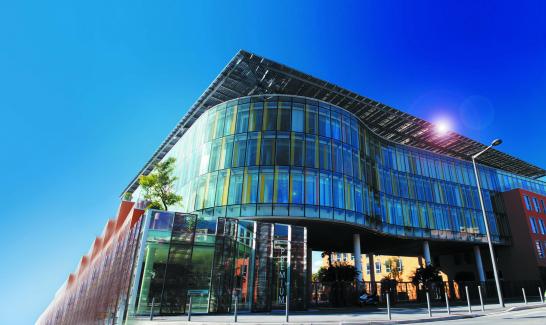A framework of reference document, focusing on environmental excellence within the Eco-Vallée, has been prepared by the Public Urban Development Agency (EPA), targeting all actors involved in the urban development and construction in the plaine du Var. It is entitled: “Framework of reference for the environmental quality for development and constructions »
Who ?
As warrantor of the policies established at the Grenelle Environment forum, the EPA de la plaine du Var sets the essential conditions for an eco-exemplary development of all living spaces. It defines the strategies to be put in place by all stakeholders which include local territorial collectivities, real estate developers, HLM (social housing) organisms, urban planners, institutional architects…
How ?
Eight priority themes, each with their objectives in terms of quality, are outlined in this framework of reference (see box). Contractors are asked to conform to them, and encouraged to innovate and experiment in terms of new sustainable solutions and urban architecture. In this eco-friendly context, the urban planning must adapt to the Mediterranean context and be respectful of the natural setting, while favoring a mixed approach in terms of activities, housing, and population.
Builders are incited to place environmental concerns at the heart of each project, and to systematically aim to preserve the natural setting and its vegetation, and optimize the population’s health and wellbeing. They must bear in mind such factors as waste and water management, recycling of raw materials, soft transport, risk management (floods, earthquakes, forest fires), as well as the use of clean energies.
8 priority themes
1 – Management of the operations
A system of management is to be adopted for all operations, which is based on in depth planning, transparency and precise estimations.
2 – Natural setting and biodiversity
A protected natural domain covers 27,5 % of the territory. Its flora and fauna, with its diversity of species, must be preserved, as well as the area’s ecological functionalities.
3 – Health and wellbeing, building materials and natural risks management
Clean materials must be used for construction, isolation from noise, cold and heat must be optimized, and natural risks factors taken into account.
4 - Energy
The use of renewable energies must be favored, and a secured provision for electricity ensured, with power adapted to seasonal needs.
5 - Water
The natural water risks must be fully apprehended and water management optimized in terms of drinkable water, the use of rain water and water waste treatment; the river Var must be made less vulnerable to pollution.
6 - Waste
The goal is to reduce waste and enhance recycling of household, industrial, construction waste, and to reinforce the network of waste sites.
7 - Transport
A study of local transit will help determine how to improve the quality in this area, with a strong focus on soft transport.
8 - Governance
All stakeholders (dwellers, collectivities, companies and investors) are to be fully informed and made aware of these guidelines that they will have to respect, and which will be outlined in a “clean construction site” chart.








